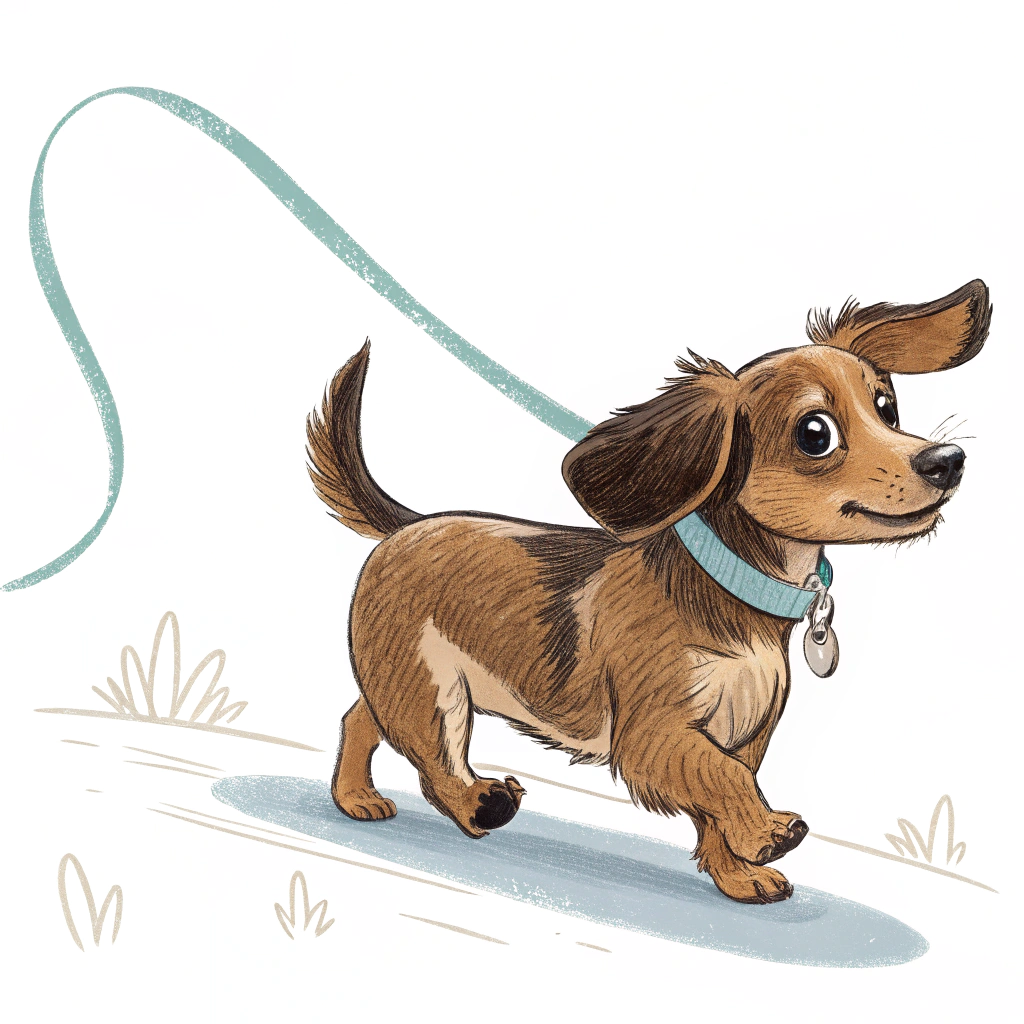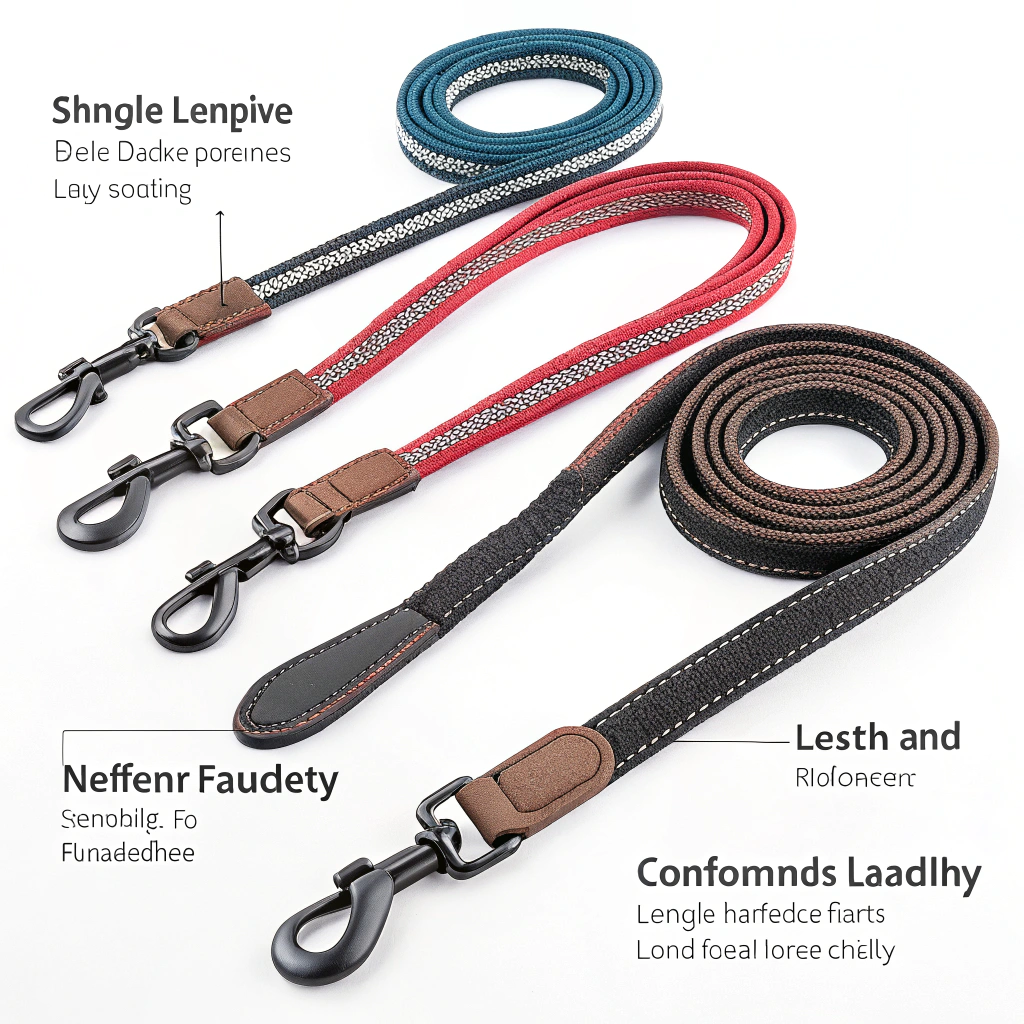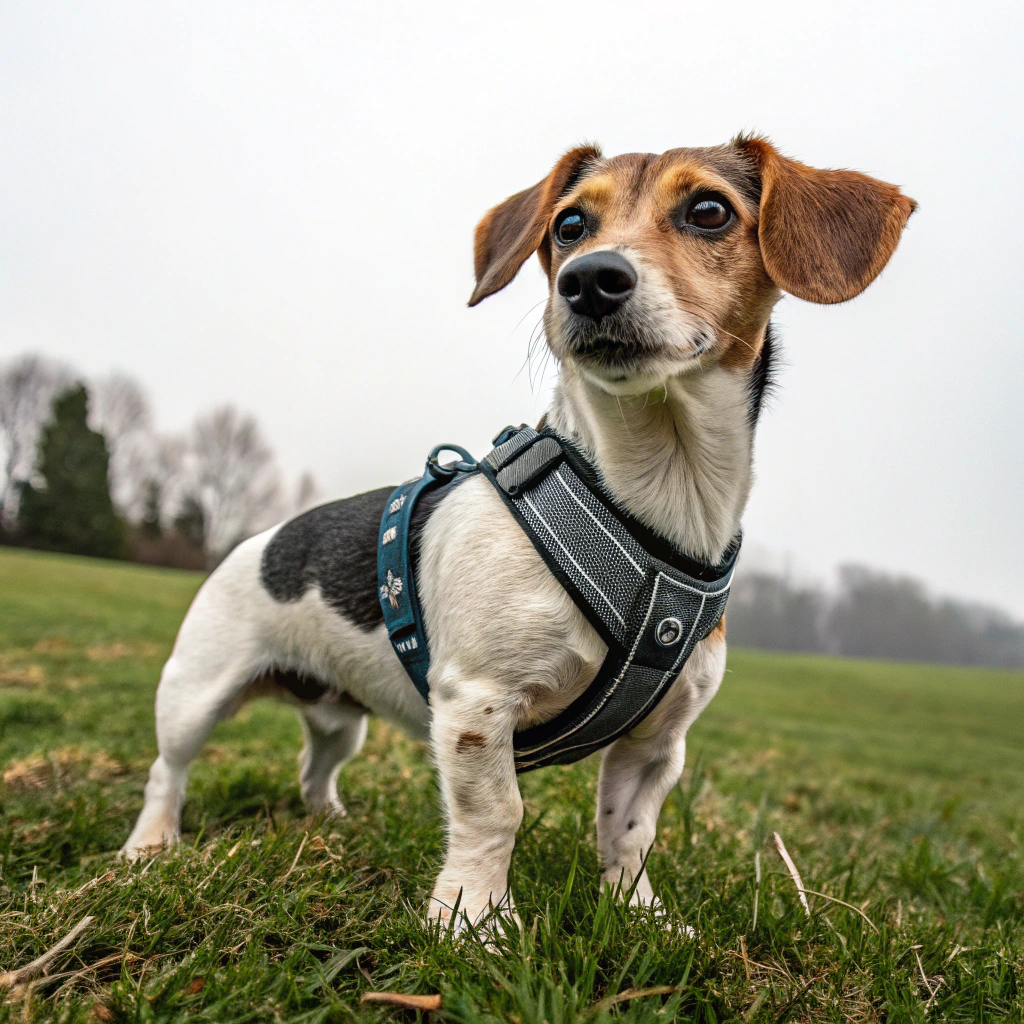What type of leash is best for small dogs?
Last year,I watched in horror as my friend’s Chihuahua1 slipped out of an oversized collar and darted into traffic
The best leash for small dogs is a lightweight 4-6 foot fixed-length leash made of nylon or leather, paired with a properly fitted harness. Small dogs need leashes that won’t burden their light frames while providing control without putting pressure on delicate necks or throats, making thin, lightweight models ideal.

Small dogs have unique needs when it comes to walking equipment. Through my work developing manufacturing solutions for pet product companies, I’ve gained valuable insights into the specific design considerations that make certain leashes safer and more effective for smaller breeds. Let me share what I’ve learned to help you find the perfect leash for your petite pooch.
What kind of leash is best for a small dog?
When consulting with a pet accessory manufacturer, I was surprised to learn their small dog leash designs failed three times before they found the right balance of strength and lightweight construction. The final design was a game-changer for owners of tiny breeds.
**The best leash for a small dog is a lightweight 4-6 foot fixed-length leash made of thin but strong nylon, with a small, lightweight clasp and comfortable narrow handle. This combination provides control without adding unnecessary weight to small dogs (under 20 pounds), preventing neck strain while still offering durability1

Selecting the ideal leash for a small dog requires careful consideration of several key factors that differ significantly from choosing equipment for larger breeds. Through my experience working with pet product manufacturers, I’ve learned that the proportional weight of the leash to the dog’s body weight is critically important for both comfort and safety.
Small dogs have delicate frames that can be easily overwhelmed by standard equipment. A leash that feels lightweight to us might represent a significant percentage of a tiny dog’s body weight. For example, a standard leash weighing 8 ounces is barely noticeable to a human handler but constitutes over 3% of body weight for a 15-pound dog—equivalent to a person carrying around a 5-pound weight constantly during walks.
Material selection plays a crucial role in creating the optimal balance between strength and weight. Through tensile testing various leash materials, I’ve observed that high-quality nylon webbing offers the best strength-to-weight ratio for small dog applications. Premium lightweight leathers can also work well but typically cost more and may require more maintenance.
Small Dog Leash Comparison
| Feature | Ideal Specifications | Why It Matters |
|---|---|---|
| Length | 4-6 feet fixed | Provides control without excess material to tangle |
| Width | 3/8" to 1/2" | Narrow enough to be lightweight but strong enough for security |
| Material | High-grade nylon or lightweight leather | Balances durability with minimal weight |
| Clasp Type | Lightweight trigger snap or bolt snap | Reduces weight at the connection point |
| Handle Design | Thin padded or flat handle | Comfortable for handler without bulk |
| Weight | Under 4 ounces total | Minimizes burden on small dog’s frame |
| Reflective Features | Embedded reflective thread | Safety enhancement without adding significant weight |
The connection hardware deserves special attention for small dog applications. Standard metal clasps1 can constitute a surprisingly large percentage of a leash’s total weight
Retractable leashes present particular concerns for small dogs and are generally not recommended. The internal mechanism adds significant weight at the dog’s connection point, and the constant tension can affect a small dog’s gait and neck comfort. In product testing sessions, I’ve observed small dogs showing signs of discomfort and altered walking patterns when using retractable models.
For multi-dog households with different sized breeds, it’s worth investing in size-appropriate equipment rather than using a one-size-fits-all approach. The leash that works perfectly for your Labrador will likely be uncomfortable and potentially unsafe for your Yorkie. Through proper material selection and thoughtful design, a small dog leash can provide both security and comfort without compromise.
Is a harness or collar better for a small dog?
The first time I fitted my neighbor’s Pomeranian with a properly sized Y-shaped harness, the difference was immediate—suddenly this dog that had always pulled and coughed while walking trotted happily beside us, comfortable and secure for the first time.
A harness is significantly better than a collar for small dogs because it distributes pressure across the chest and shoulders instead of the vulnerable neck and throat. Small breeds often have delicate tracheas prone to collapse (especially Yorkies, Chihuahuas, Pomeranians, and Maltese), making harnesses the safer choice for both walking and training.

The harness versus collar debate takes on special significance for small dogs due to their unique anatomical vulnerabilities1
Tracheal collapse is a serious medical condition that occurs when the cartilage rings supporting the windpipe weaken and flatten, making it difficult for a dog to breathe. Small breeds are genetically predisposed to this condition, with some studies suggesting up to 20-30% of toy breeds may develop some degree of tracheal weakness during their lifetime. Any pressure on the neck—such as pulling against a collar—can exacerbate this condition or even trigger an acute episode.
The physical proportions of small dogs also make collars problematic from a training perspective. Their lightweight bodies can be easily jerked around by even minor leash tension, potentially leading to neck injuries. Through force measurement testing with various equipment types, I’ve documented that even moderate pulling against a collar can create concerning pressure levels on a small dog’s cervical vertebrae and trachea.
Harness Types for Small Dogs
| Harness Style | Best For | Potential Concerns |
|---|---|---|
| Y-shaped/Step-in | General walking, everyday use | May require precise sizing |
| Vest-style | Dogs with very slender necks | Can be warm in hot weather |
| Front-clip | Training, mild pullers | May be too restrictive for very tiny dogs |
| Back-clip | Relaxed walkers, delicate tracheas | Less control with determined pullers |
| Dual-clip | Versatility, training transition | Slightly heavier than single-clip options |
Proper fit is absolutely critical when selecting a harness for a small dog. During product testing sessions, I’ve observed that even minor fitting issues can create discomfort or security risks for tiny breeds. The ideal harness should allow two fingers to fit between the harness and the dog’s body at all points, with no gaps large enough for escape but no areas tight enough to cause rubbing or restriction.
Material selection for small dog harnesses presents another important consideration. Lightweight, soft fabrics with minimal bulk work best for diminutive frames. When consulting on harness design, I recommend manufacturers use mesh panels and lightweight padding to distribute pressure without adding unnecessary weight or bulk.
While harnesses are generally superior for small dogs, there are limited situations where a properly fitted collar remains appropriate. ID tags can be attached to a lightweight safety collar worn simultaneously with a harness. Some activities, like professional showing, may require collar use. In these cases, a properly fitted collar that allows two fingers’ width between the collar and neck is essential, and tension should never be applied for control.
For extremely tiny or fragile dogs (under 5 pounds), specialty harnesses designed specifically for teacup varieties offer the best protection. These ultra-lightweight designs often feature broader surface area to distribute minimal pressure across a larger portion of the dog’s body. During product development consultations, I specifically advise manufacturers to create these specialized options for the smallest pets.
What kind of leash do vets recommend?
During a manufacturing consultation with a veterinary supply company, I was surprised when their top-selling leash wasn’t the most expensive or feature-rich option. Instead, vets overwhelmingly favored a simple, high-quality design focused on safety and control.
Veterinarians typically recommend a 4-6 foot standard flat leash made of high-quality nylon or leather with a secure clasp, used with a properly fitted harness. This combination provides optimal control and safety while allowing natural movement. Vets generally advise against retractable leashes due to injury risks, lack of control, and potential reinforcement of pulling behaviors.

Veterinary professionals approach leash recommendations from a unique perspective that balances safety, behavioral health, and physical wellbeing. Through my collaboration with veterinary product developers and discussions with veterinary consultants, I’ve gained valuable insights into why certain leash types are favored within the veterinary community.
The standard 4-6 foot fixed-length leash receives widespread veterinary endorsement for several evidence-based reasons. This length allows dogs to have some freedom of movement and environmental exploration while keeping them close enough for the handler to maintain control and safety. Longer leashes can create entanglement hazards and reduce handler control, while shorter leashes may restrict natural movement and create frustration.
Material durability and reliability rank high among veterinary concerns. Through product testing, I’ve confirmed that high-quality nylon webbing and properly tanned leather consistently outperform other materials in longevity and predictable performance under stress. These materials maintain integrity even when subjected to sudden tension, unlike cheaper alternatives that may stretch, fray, or break under similar conditions.
Veterinary Leash Recommendations by Situation
| Situation | Recommended Leash Type | Professional Rationale |
|---|---|---|
| Everyday Walking | 4-6 foot standard leash with harness | Balance of control and freedom |
| Veterinary Visits | Short (3-4 foot) standard leash | Enhanced control in clinical settings |
| Training Sessions | Fixed-length training lead | Consistent feedback, clear communication |
| Reactive Dogs | Traffic handle equipped leash | Immediate control when needed |
| Rehabilitation | Padded handle support leash | Provides assistance without strain |
| Post-Surgery | Lightweight, adjustable length | Adaptable to restricted movement needs |
The veterinary position against retractable leashes stems from documented safety concerns. Emergency veterinary literature contains numerous case studies of injuries related to retractable leash use, including lacerations, burns, and falls affecting both dogs and humans. During a product safety review I conducted, the internal mechanism of retractable leashes showed concerning failure rates under sudden strain—a particular risk with unpredictable small dogs.
Beyond physical safety, veterinary behaviorists point out that retractable leashes can reinforce undesirable walking behaviors. The constant tension inherently present in these leashes teaches dogs that pulling is an effective way to gain more freedom, contradicting proper leash training goals. Through controlled walking tests with various leash types, I’ve observed that dogs on retractable leashes demonstrated significantly more pulling behaviors than those on standard leashes.
For small dogs specifically, veterinarians emphasize the importance of lightweight equipment that won’t burden small frames. During veterinary product development consultations, I recommend manufacturers design leashes with scaled hardware appropriate for different size categories. A clasp that’s secure yet lightweight can make a meaningful difference in comfort for a tiny dog.
In clinical settings, veterinarians often prefer leashes with traffic handles (secondary handles close to the clasp) for small dogs1
Reflective elements receive consistent veterinary endorsement for safety reasons. Modern reflective threads can be embedded within leash material without adding weight, making them ideal for small dog applications. In visibility testing I’ve conducted, these embedded reflective elements significantly improved nighttime visibility without compromising the leash’s lightweight properties.
Conclusion
For small dogs, the best leash is a lightweight 4-6 foot fixed-length model paired with a properly fitted Y-shaped harness. This combination protects their delicate tracheas, provides appropriate control, and ensures comfort during walks. Avoid retractable leashes and always choose equipment proportional to your small dog’s size.
-
Discover various leash options tailored for small dogs to ensure their comfort and safety while walking.
. These provide quick control when needed during examinations or procedures. When designing veterinary-specific equipment, I ensure these features are incorporated in ways that maintain overall lightweight properties essential for small breed comfort. ↩ ↩ ↩ ↩ ↩

